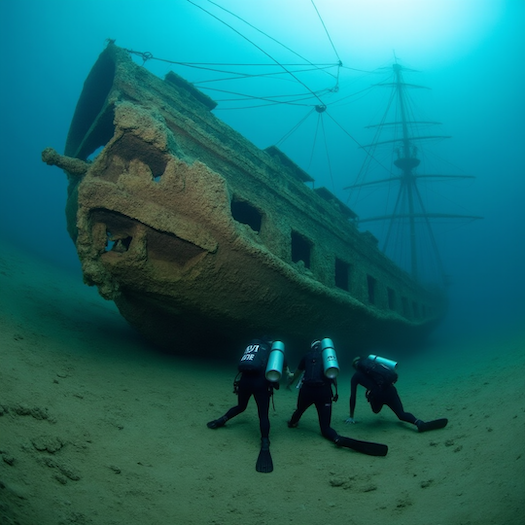
After centuries of mystery, maritime archaeologists finally identify the legendary explorer’s ship in Rhode Island waters
New York, N.Y. – Maritime archaeologists have definitively confirmed the location of Captain James Cook‘s legendary vessel HMS Endeavour, ending decades of scholarly debate and underwater detective work. The historic ship, which carried Cook on his first voyage of discovery to the Pacific Ocean, has been positively identified among a collection of Revolutionary War-era shipwrecks in Newport Harbor, Rhode Island.
The announcement represents a monumental achievement in maritime archaeology and brings closure to one of the most significant shipwreck mysteries in naval history. The HMS Endeavour, originally named Earl of Pembroke, served as Cook’s flagship during his groundbreaking 1768-1771 expedition that led to the European discovery of Australia‘s eastern coastline and the mapping of New Zealand.
Decades of Scientific Investigation
The identification process involved years of meticulous research combining historical records, advanced underwater archaeology techniques, and cutting-edge technology. The Australian National Maritime Museum partnered with the Rhode Island Marine Archaeology Project to conduct extensive surveys of the Newport Harbor shipwreck site, where 13 vessels from the American Revolutionary War period had been deliberately scuttled by British forces in 1778.
Dr. Kieran Hosty, manager of maritime heritage at the Australian National Maritime Museum, described the discovery as “the culmination of a detective story that has captivated maritime historians for generations.” The research team utilized advanced sonar mapping, underwater photography, and careful analysis of ship construction techniques to distinguish the Endeavour from other vessels in the underwater graveyard.
The confirmation process required comparing physical evidence from the wreck site with detailed historical records, including Admiralty documents, ship construction specifications, and firsthand accounts from Cook’s voyages. Researchers examined timber samples, hull construction methods, and distinctive architectural features that matched the Endeavour‘s known characteristics.
Revolutionary Maritime Technology
The HMS Endeavour represented cutting-edge naval technology of its era, specifically designed for long-distance exploration and scientific research. Built in Whitby, England, in 1764, the vessel measured 106 feet in length and featured a reinforced hull capable of withstanding the rigors of extended ocean voyages and potential beaching for repairs.
The ship’s robust construction proved essential during Cook’s first Pacific voyage, when the vessel ran aground on the Great Barrier Reef near present-day Queensland, Australia. The crew’s successful repairs and continuation of their mission demonstrated both the ship’s durability and the exceptional seamanship of Cook’s expedition team.
Following its return from the Pacific, the Endeavour was sold out of naval service and renamed Lord Sandwich. The vessel was subsequently pressed into service as a transport ship during the American Revolutionary War, ultimately meeting its fate in Newport Harbor when British forces deliberately sank it along with other vessels to create a naval blockade.
International Collaborative Effort
The successful identification required unprecedented international cooperation between Australian, American, and British maritime institutions. The project brought together expertise from multiple disciplines, including maritime archaeology, naval history, materials science, and underwater technology specialists.
Kevin Sumption, director of the Australian National Maritime Museum, emphasized the global significance of the discovery, stating that the Endeavour belongs to world maritime heritage rather than any single nation. The collaborative approach ensured that research findings would be shared openly among international scholarly communities.
The research team faced significant challenges in distinguishing the Endeavour from other vessels in the shipwreck cluster. The deliberate scuttling process and centuries of underwater deterioration had obscured many identifying features, requiring innovative archaeological techniques and careful comparative analysis.

Cultural and Historical Impact
The HMS Endeavour‘s voyages fundamentally altered global understanding of Pacific geography and established lasting connections between Europe and the Pacific region. Cook’s expeditions provided the first accurate maps of New Zealand and Australia’s eastern coast, while also advancing scientific knowledge in astronomy, botany, and navigation.
The ship carried a diverse crew of sailors, scientists, and artists, including botanist Joseph Banks and astronomer Charles Green. Their combined efforts produced detailed records of Pacific flora, fauna, and indigenous cultures, creating an invaluable historical archive that continues to inform modern research.
For Indigenous Australian and Maori communities, the Endeavour represents a complex legacy of first contact with European explorers. The ship’s arrival marked the beginning of profound cultural changes that continue to influence contemporary discussions about colonialism, cultural preservation, and historical reconciliation.
Future Research and Preservation
The confirmed identification opens new possibilities for detailed archaeological study and historical research. Scientists plan to conduct comprehensive surveys of the wreck site, potentially recovering artifacts that could provide fresh insights into 18th-century naval technology and exploration practices.
Preservation efforts will focus on protecting the site from further deterioration while ensuring responsible access for ongoing research. The shallow waters of Newport Harbor present both opportunities and challenges for long-term conservation of the remaining ship structure.
Educational institutions and museums worldwide are already developing programs to share the discovery’s significance with broader audiences. The Australian National Maritime Museum plans to create new exhibitions highlighting the Endeavour‘s role in Pacific exploration and its lasting impact on global maritime history.

The discovery of Captain Cook’s HMS Endeavour in Rhode Island waters marks a historic achievement in maritime archaeology. After decades of research, international teams have confirmed the legendary explorer’s ship among Revolutionary War-era wrecks in Newport Harbor. The vessel, which carried Cook to Australia and New Zealand, represents a pivotal moment in Pacific exploration history.